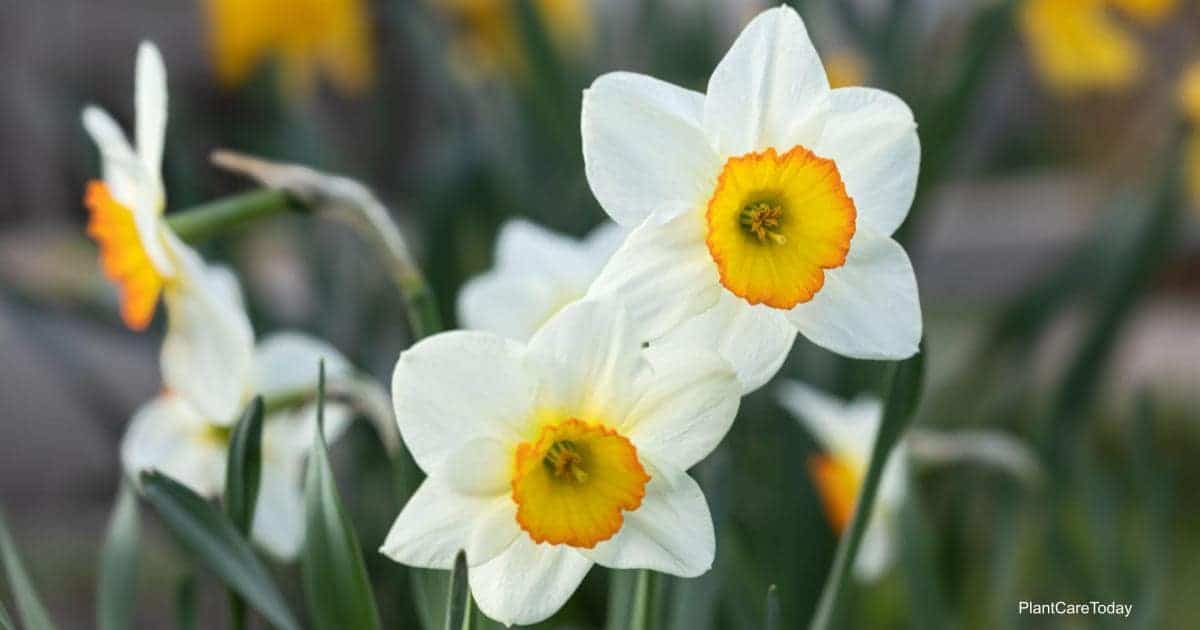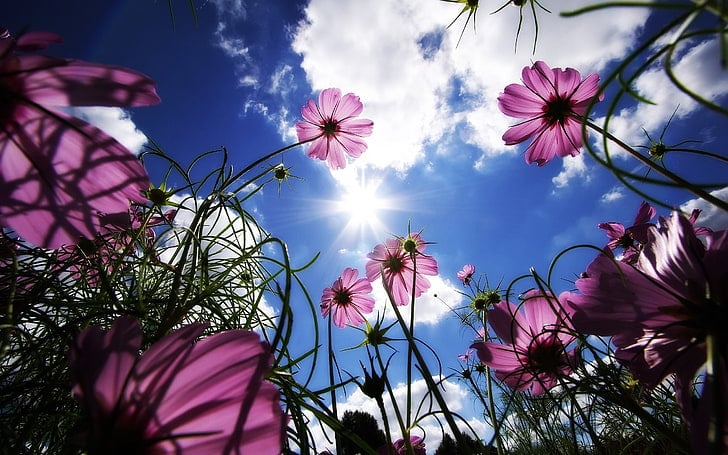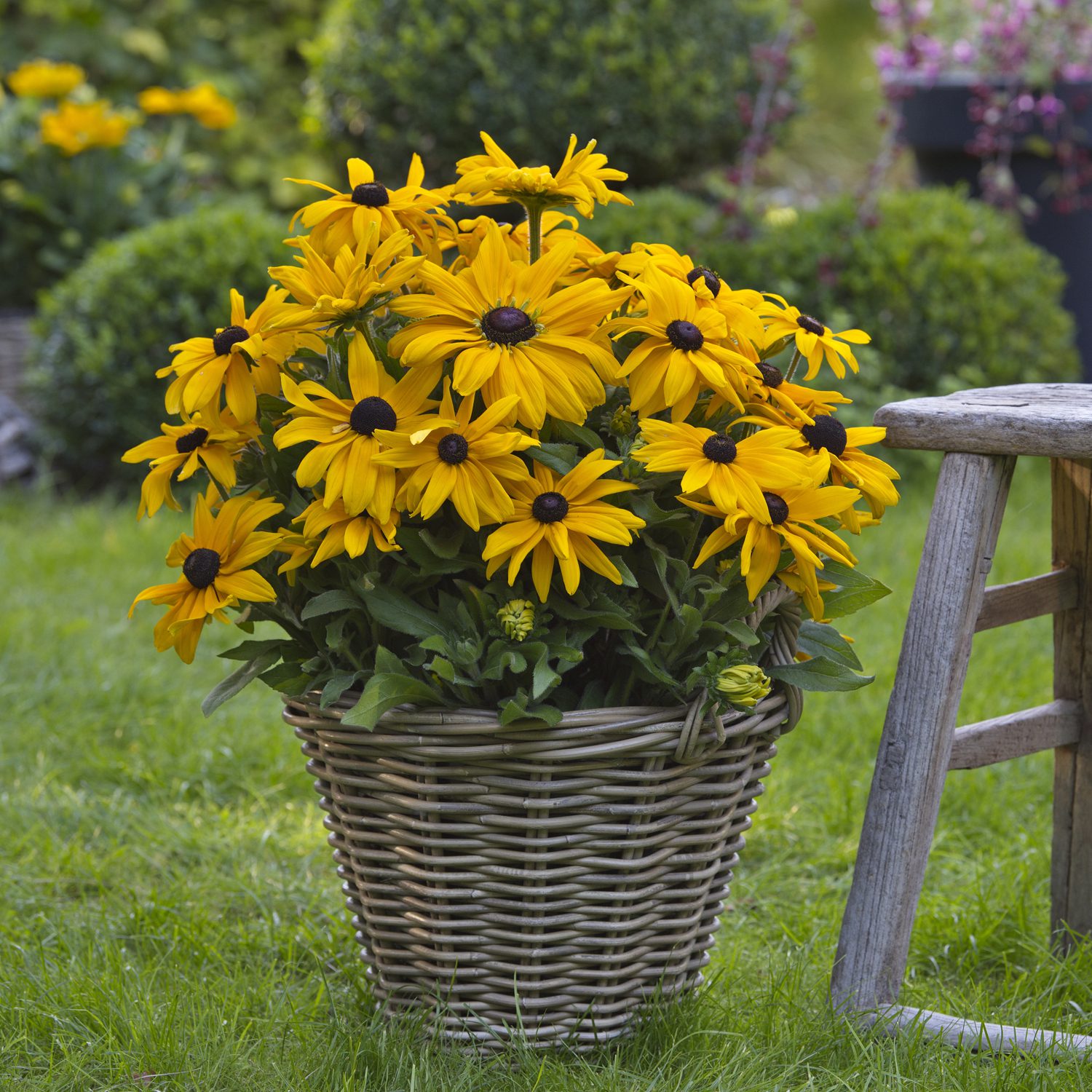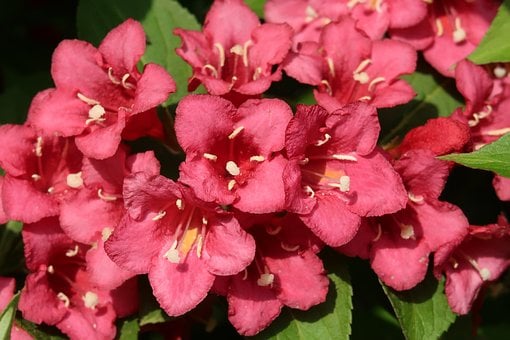20 Unique Types of Freesias to Add Color to Your Garden
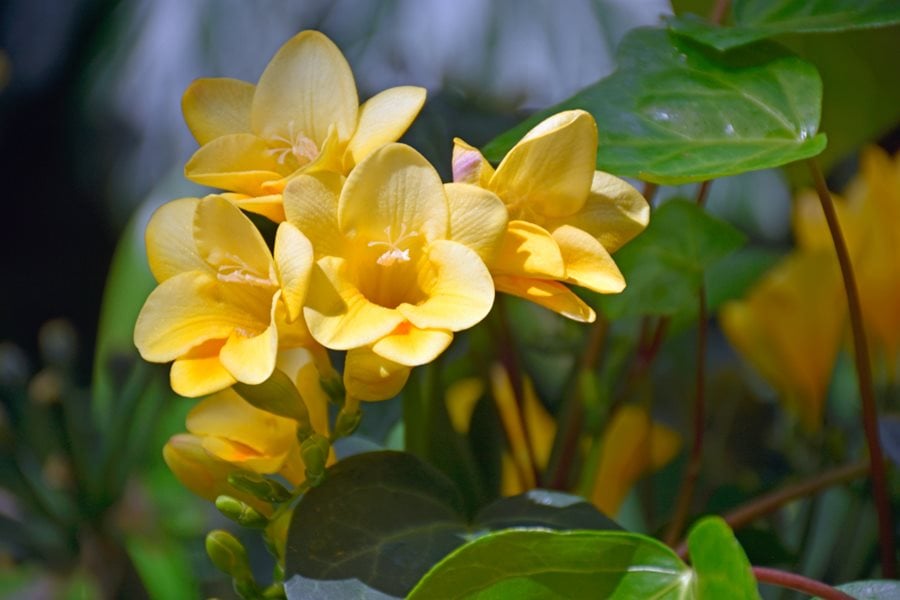
Table of Contents
Freesias are renowned for their beauty, striking colours, and sweet, citrus fragrance, making them a popular choice for various purposes, like fragrances and soaps. They are herbaceous perennial flowering plants that are categorized under the Iridaceae family.
It was first described by the German Botanist Christian Friedrich Ecklon back in 1866. He named the genus after his fellow botanist and good friend Friedrich Freese. Since then, they have been known as the flowers of friendship.
Freeisa is a snap to grow from seed; you’ll see the lovely flowers in just one to two years. Moreover, when the happy-go-lucky Freesia laxa grows in the summer, you can count on it to reseed wherever it’s happy and suited. Looking to learn more about freesias and their unique qualities?
Our blog post is a comprehensive guide covering everything from Freesia types to how best to grow them.
Distinct Freesia Blooming Varieties
1. Freesia Andersoniae L.Bolus
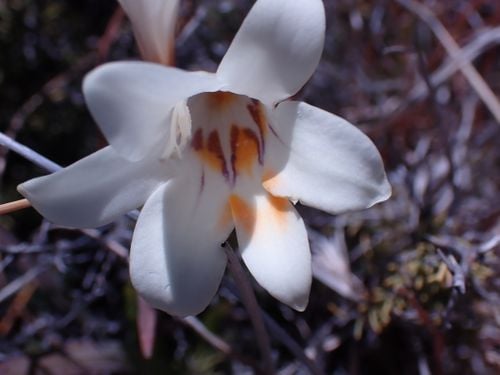
This is the only species with gullet-shaped flowers outside South Africa’s winter rainfall zone. It is found in scattered areas throughout the central interior of South Africa, typically inhabiting the lower southern slopes of dolerite and dolomite outcrops. Corms typically begin to sprout after receiving rainfall in the summer or fall, but they do not produce flowers until springtime. A noticeable and discernible lily scent emanates from the flowers, which persists even during nighttime, suggesting the likelihood of moth pollination.
2. Ballerina
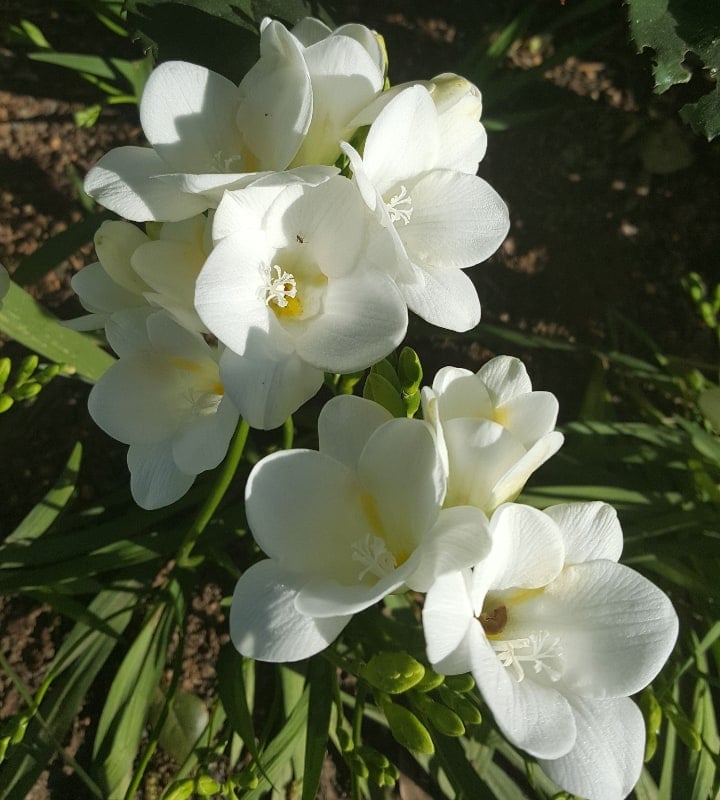
The Ballerina flower is a sight to behold with its creamy-white petals that are so dense and full that they resemble roses. These stunning blooms are perfect for creating beautiful bouquets and container centrepieces. This particular plant is so splendid that it can enhance any backyard, and that’s why numerous gardeners highly favour it.
3. Red Beauty
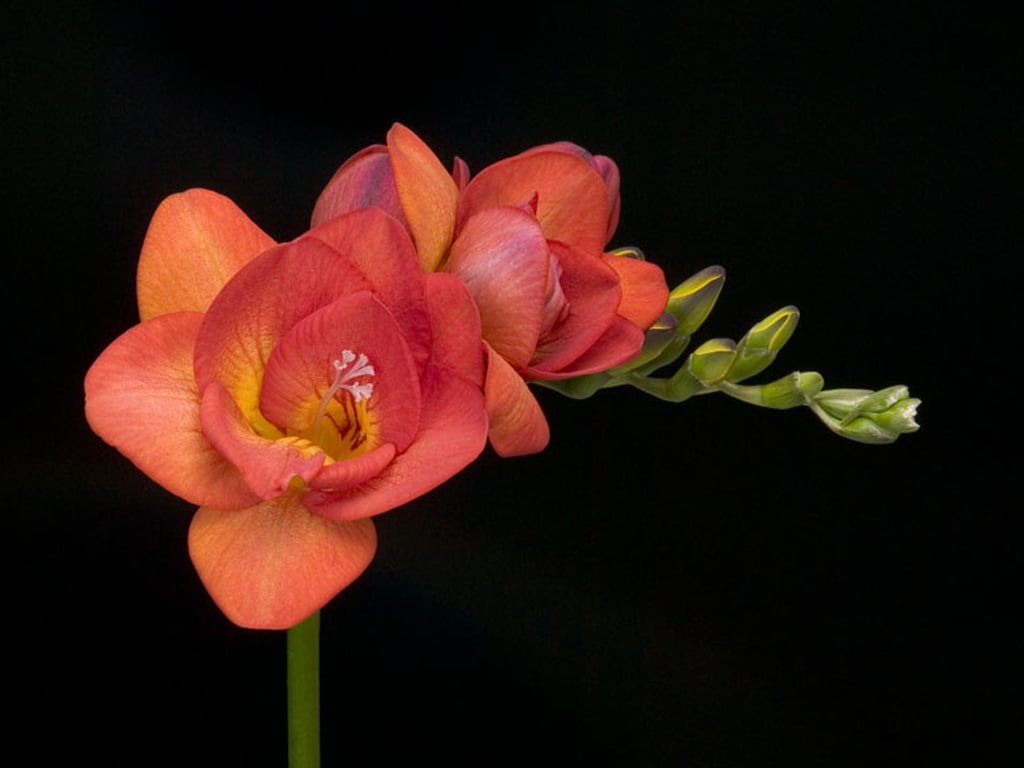
One of the most distinctive features of this freesia variety is its scent, which is both strong and sweet. However, the fragrance is only noticeable when the petals are unfurled. The plant produces double bright-red blooms with yellow highlights at the base of each petal. This species of freesias might not grow as rapidly as those that thrive in the fall and winter months, but it is worth the wait.
4. Vulcano
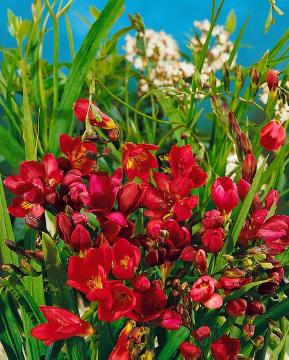
You cannot miss noticing this plant if it is even remotely close to you. The flower boasts striking red-orange petals that darken towards their edges and tips. If you want to know when to plant this flower, you should check what zone you live in, as the planting times vary based on where you live. Moreover, these plants are tolerant of both deer and rabbits, so you can expect to enjoy their company for a long time.
5. Freesia Caryophyllene (burm.F.)
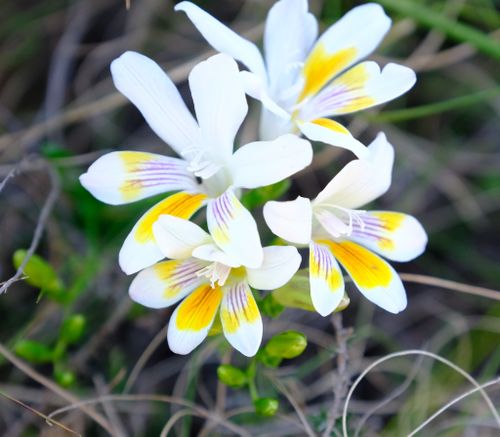
This plant can be found in renosterveld growing on gravely clay soils and in fynbos or thicket on sandy soil near the coast. This types of Freesia typically grow prostrate and reach a height of 3 to 10 cm. It has a spike of 3 to 10 downward-curving flowers, often emitting a pleasant violet scent. Flowering typically begins one month after the initial fall showers, usually between April and June. It’s not surprising to find significant variations among the plants in this species since they exist in such diverse habitats.
6. Freesia Fergusoniae L.Bolus
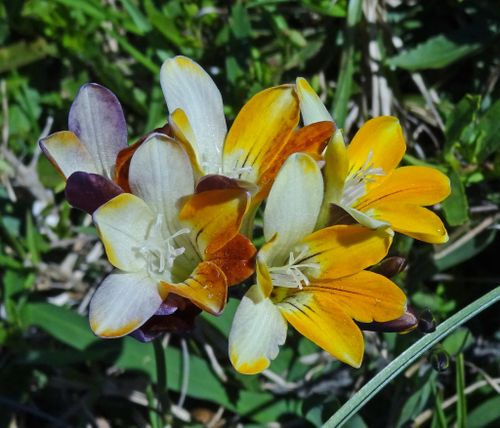
This particular plant species is frequently spotted on clayey soils in the Renosterveld of the southern Cape, and it flourishes the most in sites that are cleared or in the open. This species can reach heights of 6 to 20 cm and features 7 to 13 leaves that are either prostrate or inclined. Its flowers are arranged in a horizontal or drooping spike to create a stunning visual display. The corms have a coarse texture, while the flowers are beautifully scented. Flowering occurs early, from mid-July to late August, and occasionally, even earlier during winter.
7. Freesia Fucata J.C.Manning & Goldblatt
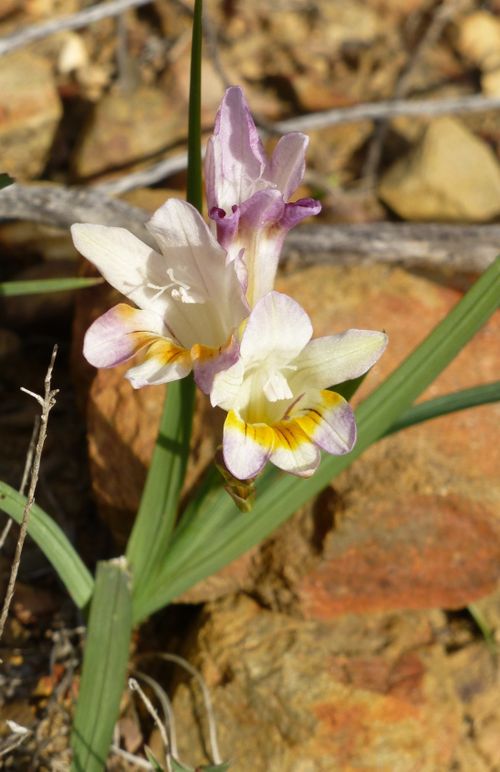
This southwest Cape endemic can be found on clay slopes within the Renosterveld. It blooms in the winter months (July). It is frequently spotted along roadsides or in washes. The stem of this species ranges from 15 to 30 cm, with 5 to 6 linear to lanceolate leaves that taper to a point and are almost as long as the stem. A yellow-orange patch and a dark midline are present at the lower tepals’ base. This species can be easily distinguished from other blooming species by the narrow 4-5 mm leaves and tricuspidate bracts.
8. Alba freesia (Freesia refracta var. alba)
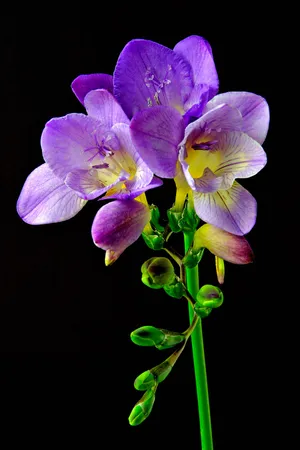
This species is identified by its small size, typically measuring no longer than 16 inches. The stems are thin and spread out, while the inflorescence consists of a paniculate spike of 2-5 white or yellow-orange flowers. It blooms in April. The Alba freesia boasts large snow-white flowers with bold purple strokes adorning the yellow backdrop of its inner throat.
9. Tritonia Laxifolia
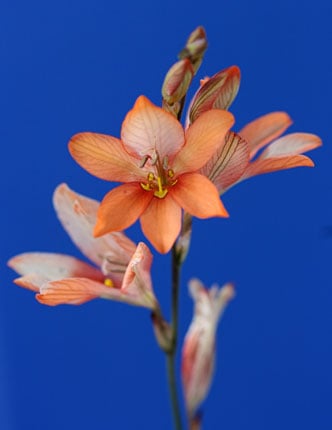
Unlike the more popular Winter/Spring Tritonias, this species’ natural habitat stretches from the Eastern Cape in South Africa to Tanzania, which experiences rainfall during the Summer months. The leaves are slender and have a shiny pale green colour. These flowers are highly scented and trumpet-shaped with a beautiful dusky, sunset orange hue.
10. Vienna
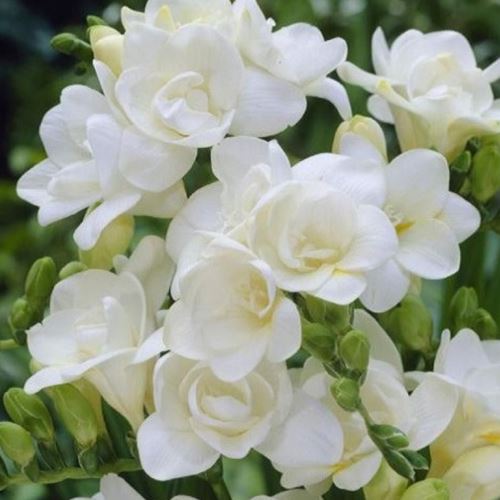
The Vienna freesia species showcases petals with a creamy-white shade, which then transforms to a subtle beige at the centre of the flower. This makes them an excellent option for planting next to flowers of any colour, as they complement and enhance the surrounding blooms. These plants make for stunning border additions and require minimal upkeep, though using stakes is recommended to ensure they stay upright.
11. Freesia Grandiflora Ssp. Occult
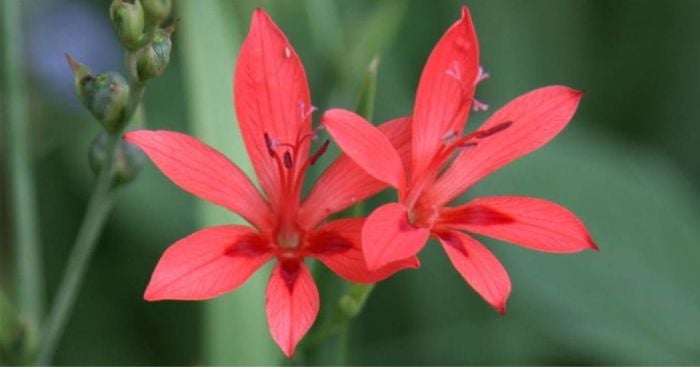
You can predominantly find them near Mocuba at the periphery of the coastal plain in the middle of Northern Mozambique. From May to June, this plant can be seen flowering in woodlands and forests at mid-elevations. They can be identified by their pink flowers, which occasionally fail to open fully, and their filaments that extend approximately 6 mm in length but only protrude 2 mm from the flower.
12. Freesia Hybrids
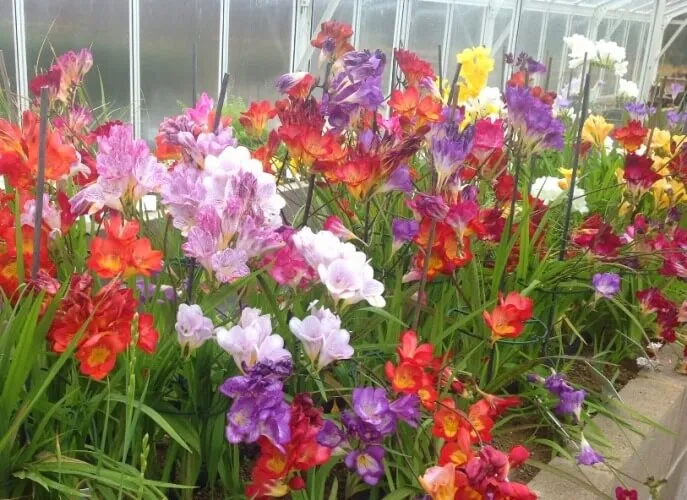
The hybridization of Freesia commenced after the arrival of Freesia alba in 1878, enabling the plant to breed with Freesia leichtlinii. The introduction of rose pink and yellow varieties of Freesia corymbose at the beginning of the 20th century was a crucial step in its development.
Hybrid corms are affordable, and certain ones are treated to bloom upon planting with heat. Thus, they can be grown as summer flowers in areas where they cannot naturally grow during the winter.
13. Freesia Laxa Subsp. Azurea (goldblatt & Hutchings)
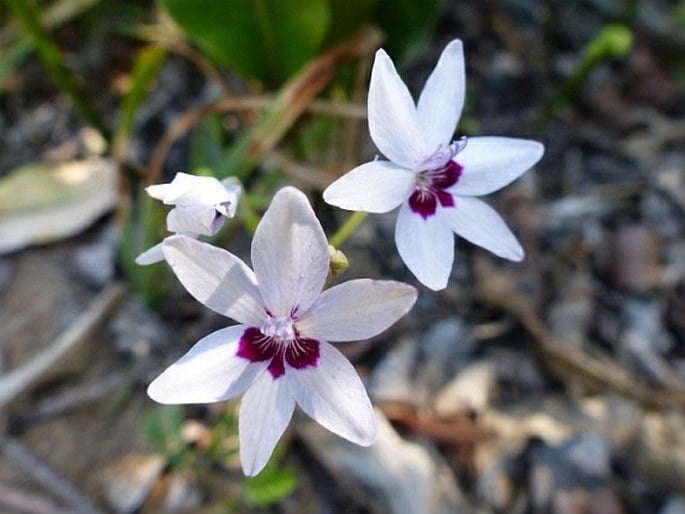
This particular types of Freesia boast blue flowers and are frequently considered more challenging to cultivate compared to its counterparts. Therefore, you can find this species only in coastal habitats spanning from KwaZulu-Natal to Mozambique. They prefer coarse sandy soils and can be seen growing in exposed areas like grassy dunes and areas with partial shade. They bloom during winter and early spring, from June to September.
14. Tritonia Crocata
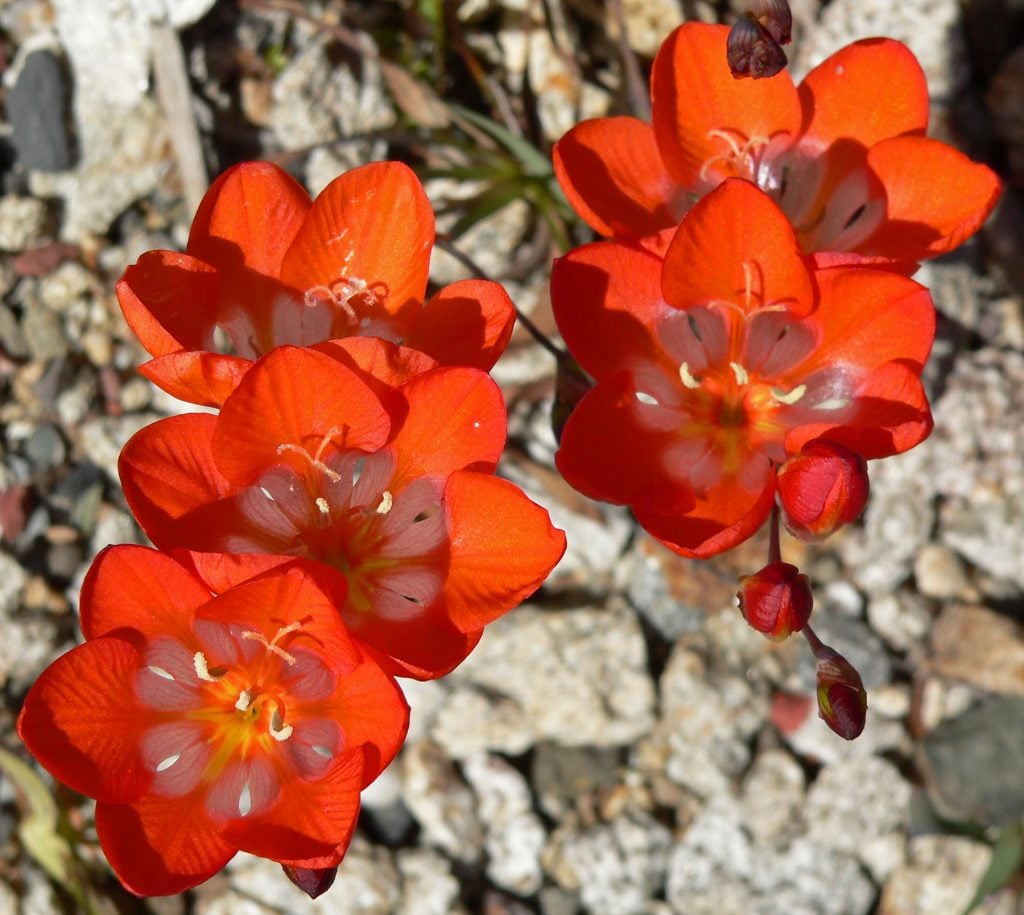
This species is indigenous to South Africa. Being one of the “False Freesias,” it bears small cup-shaped flowers. Their colour ranges from orange to vermilion, with yellow highlights on the lower three petals. They are known for their strong fragrance, especially during the night times. They are best known to bloom during summer and can be 4 to 24 inches.
15. Tritonia Laxifolia
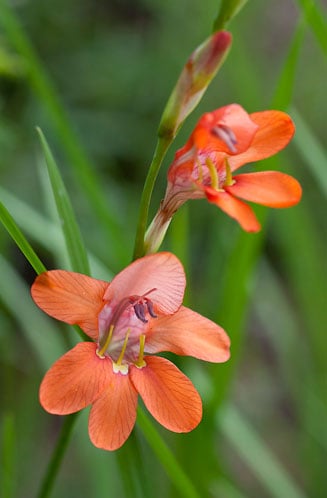
Another ‘Flame Freesia’ hails from further north as it grows in Tanzania. The leaves are narrow and of a sparkling light green hue. The flowers are trumpet-shaped, highly scented, and have a dusky, sunset-orange shade.
16. Freesia Leichtlinii Klatt

This type of Freesia is typically found along the coast of the southern Cape and grows well in sandy soil. However, this species is often growing in coastal bush, thicket, or retinoid fynbos regions. Their height can vary between 6 to 25 cm. They are easily recognizable due to their sword-shaped leaves and cream-coloured flowers. The flowers are decorated with lovely yellow markings.
17. Freesia leichtlinii subsp. leichtlinii
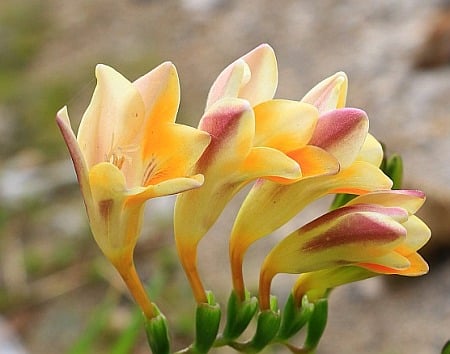
This flower has a pale yellow or cream colour that is lightly flushed with purple on the outside. The base of the lower three petals is marked with a deep yellow to orange colour, and the perianth tube measures 20-25 mm in length, with the narrow basal part being 5-9 mm long. The plant produces wrinkled seeds and blossoms from early August to late September.
18. Freesia refracta (Jacq.) Klatt
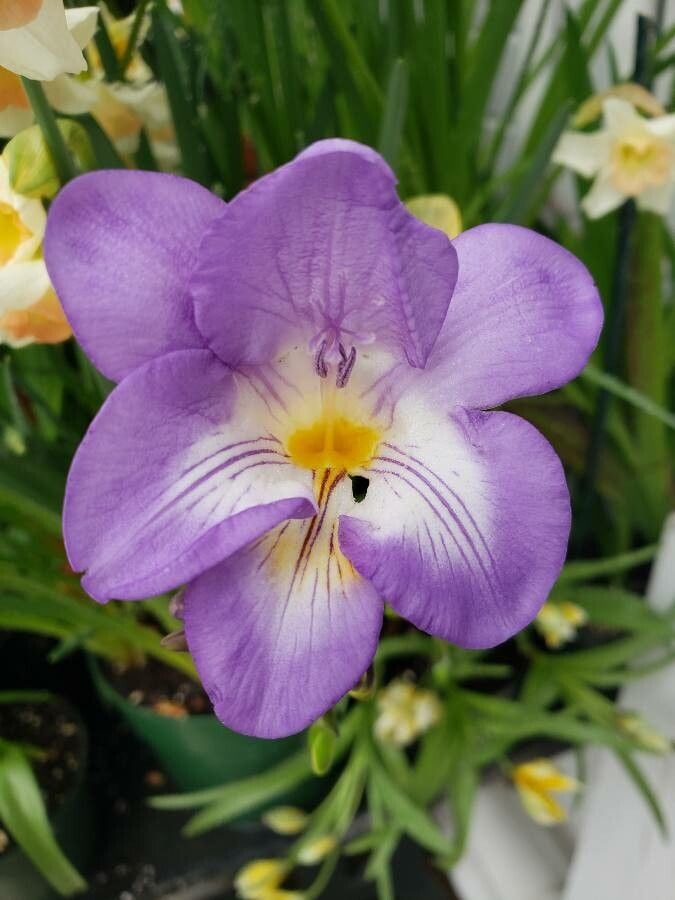
This types of Freesia are quite widespread and often grows on arid, rocky hills and plains in the southwest of the Cape region and in the Little Karoo. They typically grow 15 to 40 cm tall, boasting 7 to 10 narrow, erect, lance-shaped leaves and a flattened spike containing 5 to 10 flowers. The blooming season extends from July to September.
19. Freesia Verrucosa
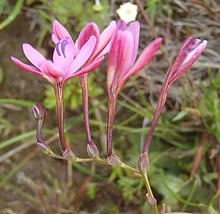
They grow in clay soil in the Renosterveld of the Karoo Mountain region and southeastern Cape. The plants grow in small clusters along roadsides or in rocky washes. This species can grow from 8 to 20 centimetres in height and has 7 to 10 suberect blunt leaves. The flowers are a bright shade of pink.
20. Freesia Viridis Ssp. Viridis
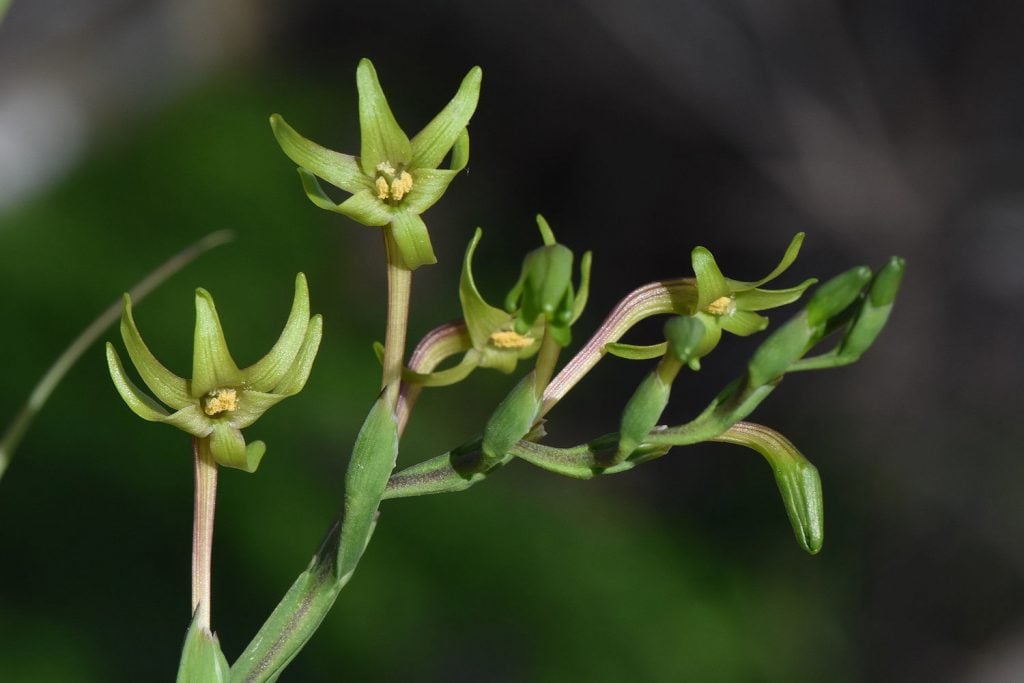
The plant grows in pockets of loamy soil in granite, shale, or limestone outcrops in coastal thickets within sight of the sea or in rock crevices. The leaves are long and slender, with a soft surface and smooth edges. The petals of flowers are rather slender and tapering, and they can be yellow-green or sometimes flushed with dark maroon.
Things to Consider for Growing Freesia
If you’re interested in growing Freesia, there are basic requirements that apply to all species, and we’ll cover them here.
- To ensure the proper growth of freesia plants, give them 12-14 hours of daily sunlight. However, be careful not to expose them to direct sunlight, which can harm the plant. Place them in a lightly shaded area to promote their growth.
- For optimal growth, the soil needs to be loose and well-draining.
- When planting, space out the broad-leaved, spreading varieties and group the narrow-leaved and parviflorus varieties together.
- To ensure your plant blooms vigorously, it’s important to maintain a strict temperature regimen: the temperature should not exceed 72°F before flowering.
- Cut the flowers only when at least two flowers are completely opened.
- Remove the wilted flowers so they don’t use the newly formed nutrients.
- Freesias thrive in humid environments but avoid getting water on the delicate buds and blooms by carefully misting the plant. The best time for this is 5-6 p.m.
How to Make Your Freesias Last Longer
Freesias can bloom and add brightness to any room for 7 to 10 days. So keep your freesias looking their best until the very end with our care tips:
- When selecting a vase for your freesias, look for one that tapers at the neck, as this will help to keep them from wilting too soon.
- Fill the vase with water, and wait for it to reach room temperature. Freesias are quite picky and prefer being placed in warm water.
- Add the flower food with your bouquet, containing all the necessary nutrients to keep your blooms healthy.
- Trim off any parts of the plant that are below the waterline.
- Trim the stems of the flower at an angled position. This encourages plants to absorb more water, and a well-hydrated flower is happy.
- If you notice cloudiness in the water every few days, replace it and promptly remove any fallen leaves or petals.
Conclusion
Freesias have long been associated with friendship, the beautiful blossoms representing the bond of true companionship. So whether you plant them in a pot or step out into your garden and make room for them there, freesias would fit in perfectly. These flowers are an absolute delight with their wonderful fragrance, pure colours, and effortless grace.
So many types of Freesia are available so you can choose according to your liking.
Which one is your favourite?
Frequently Asked Questions
Do Freesias Come Back Year After Year?
If Freesia is grown in a warmer area, it has the potential to come back every year. If you’re cultivating it in a region that undergoes cold winters, remove its corms, dry them out, and store them in a warm vicinity for the following year’s plantation.
Do Freesia Corms Multiply?
Freesia corms propagate by producing offsets or small corms that branch out from the parent corm. Gently pull off the offset and plant it separately to produce another plant.
Do Freesias Spread?
Freesias are best spread by new corms or offsets of mother bulbs. In some cases, they may also spread from self-seeding, but the characteristics of the plant may differ from the parent plant, and the resulting growth may be weaker by comparison.
What Does Freesia Smell Like?
Freesia emits a delightfully fruity and sweet scent, which can be strong or delicate, depending on the selected cultivar. You could say that this flower has a candy-like scent.
What Are the Common Problems with Freesia?
Freesias are hardy and easy to grow; however, they may encounter a few problems, including yellowing leaves, green or yellow lesions, and dark spots.

![Top 20 Small Flowering Shrubs for Shaded Gardens [UK]](https://staging.thearches.co.uk/wp-content/uploads/Wondrous-Flowering-Shrubs-For-Shade-In-Your-Garden.jpg)

